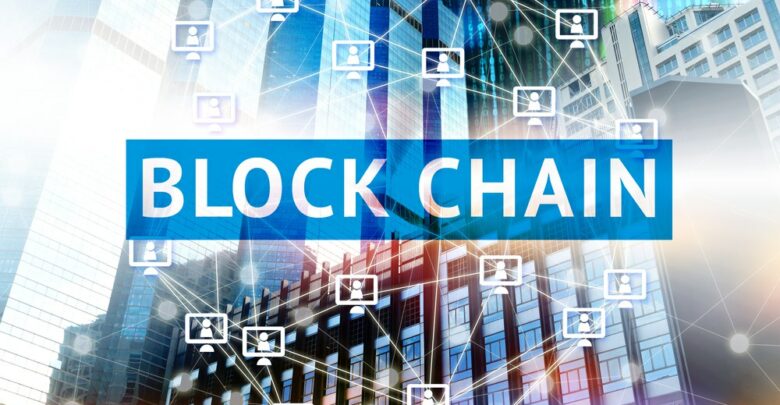What is the Blockchain Trilemma? A Beginner’s Guide

Introduction
The first ever blockchain, namely Bitcoin, was introduced only as recently as 2008. The Bitcoin whitepaper was later published by its pseudonymous creator Satoshi Nakamoto that was used as the blueprint for the creation of more DeFi projects and blockchains.
Since that time, many developers have come forward to introduce more versions of blockchains with added features. All blockchains aim to perfect the concept of trustless networks that are open-sourced and decentralized.
The Blockchain Trilemma is DeFi terminology that will help the reader understand the persisting issues in blockchain systems and its solution.
What is the Blockchain Trilemma?
Before talking about blockchains, it is crucial to understand what a blockchain is first. A blockchain is an online financial transactions network that is based on Distributed Ledger Technology.
When a person sends money from their bank to another bank account, the details of the transaction are saved on the server under the ownership of private financial enterprises. These financial enterprises, like banks, are regulated under the laws of the central government.
Therefore, a state can access the whole financial history of every individual in addition to having full control of the legal tender. On the other hand, decentralization is a concept that aims to make the process of financial transactions unmanned and automated.
It means that the people who are sending money from one point to another do not need a state or any private enterprise to watch over the financial records and act as a supervisor. In the case of banks, if any financial transactions go wrong, the person can appeal to the government and their bank to make corrections.
In the case of blockchain, all transactions are validated by miners and protected by an encryption method.
It means that it is almost impossible to change any transaction record or misrepresent financial history. The blockchains issue tokens or coins as a medium of exchange rather than using legal tender.
For example, the native coin of the Bitcoin blockchain is called BTC. These cryptocurrencies hold some value in the real market based on their use case, and it allows people to send and receive money to anyone and anywhere in the world with relatively smaller transaction costs.
After the advent of the first blockchain, many new blockchains were invented with the introduction of new features. The second most popular blockchain network in the world is Ethereum, after Bitcoin.
Ethereum network was co-founded by Vitalik Buterin, Charles Hoskinson, Joseph Lubin, Gavin Wood, and Anthony Di Lorio in 2013. This blockchain could host decentralized applications in addition to issuing cryptocurrencies.
Ethereum co-founder Vitalik Buterin has come up with a paradox called Blockchain Trilemma that defines the issues developers face to upgrade decentralized entities.
How does Blockchain Trilemma Work?
Blockchain Trilemma is based on three main pillars of a blockchain network, namely decentralization, scalability, and security. To make a blockchain truly functional and reliable, these three qualities play an important role.
However, the Blockchain Trilemma is a paradox that postulates that a developer can’t achieve all three features at the same time. In essence, it suggests that a blockchain can have two out of three important features at one time. If a developer can increase scalability and security for a blockchain, it will lack decentralization.
In the same manner, if a blockchain project can become fully decentralized and scalable, it might lack some security features. In summary, the Blockchain Trilemma suggests that one blockchain cannot ingrain optimal levels of these three important properties at once.
Technically speaking, when one or two of said features are increased, it automatically results in the decline of the remaining option.
The Defining Components of Blockchain Trilemma
As mentioned before, the Blockchain Trilemma focuses on three main features, namely scalability, security, and decentralization. The reader should read about each factor in detail to understand the principle better:
Scalability
Scalability is the ability of a blockchain network to process a total number of transactions in a unit of time. It means that if a blockchain can transact hundreds of transactions per second, it has high scalability.
Blockchain developers have tried to increase the scalability of their DLT networks to make them more suitable for mainstream adoption.
At the time when blockchains were introduced, the world was already using digital transaction methods, whereas the masses were using online transaction methods like wire transfers, mobile applications, and credit/debit cards.
VISA, which is considered one of the most used digital payment service providers, can process around 24,000 transactions per second. Considering that VISA claims to serve around 104 million people across 200 countries.
However, VISA is not a public network, and all the transaction details on the network are owned by a private organization that is also regulated by the government.
Meanwhile, the Bitcoin blockchain can process seven transactions per second while Ethereum can handle 15 transactions per second, as per a Bloomberg report in September 2022.
Blockchain networks are designed in a manner that everyone participating in the network has permission to view all the transaction history at any given time. Therefore, blockchains can take more time to verify a single transaction to ensure security and increase decentralization.
Blockchains can depend on PoW or PoS consensus model. PoW or Proof of Work is a system of transaction verification where miners compete with each other to solve the cryptic puzzle first to get qualified for the mining rewards.
On the other hand, the PoS or Proof of Stake model is where miners are awarded verification projects based on draw. Both these verification methods can take some time, and the miners must also take factors like “Finality Time” into consideration for adding each new block.
Security
If a blockchain cannot warrant security for all its transactions, it will not gain traction among users. The blockchain has been introduced to the masses during a time when internet access and computer viruses are both common knowledge.
Anyone with the smallest amount of computer knowledge would not want to send money through an application or software that is not backed by a government or regulated.
Blockchains have addressed this issue and introduced an encrypted financial network that cannot be manipulated or hacked. At the same time, there are consensus models available to verify every single transaction, such as PoW.
When a person makes a transaction on a blockchain, it creates an encrypted puzzle key for the miners. The puzzle is solved by miners using computation power that checks the entire transaction history of the said person. The purpose of the encryption puzzle is to ensure that the new transaction record is authentic.
Once the transaction has been verified, it is added to every blockchain copy in the world so that every blockchain user can access the information. The new block or transaction record can be seen as a type of digital signature or hash.
It is worth mentioning that a hash is a map of fixed-size value that has been derived from arbitrary data clutter. There are some blockchains like Solana that use the proof of history consensus model, and some other DeFi networks use Proof of Stake.
Bitcoin miners are scattered groups of individuals who set up mining farms to solve encrypted puzzles that generate hash power. Each Bitcoin mining farm can contribute a specified amount of hash power. Bitcoin mining farms can sometimes pool their efforts to improve their chances of earning mining rewards.
There is a hypothetical scenario called a 51% attack which suggests that if a single mining entity can control more than 50% of hash power, it can manipulate the transaction record and conduct double spending of Bitcoins.
Decentralization
Decentralization is the quality of a computer network to act independently and operate autonomously. A bank account holder can’t gain access to the private server and view all the transaction records available on that system.
However, blockchains are open-sourced and permissioned networks. Anyone can not only use and view the source code of blockchains, but they can also get all the on-chain transaction data without needing any approval. Decentralizations ensure transparency for investors.
Decentralization has also given rise to a new concept called Web 3.0. The internet started its journey from Web 1.0, where online websites were read-only or static entities. With the arrival of Web 2.0, websites became dynamic.
The users of today can not only view the data on the website but also interact with it, such as making comments, uploading media, or adding reactions, etc. However, Web 2.0 has created an internet where websites are owned by private companies, and the data of the users is under the control of these private enterprises.
Whereas, Web 3.0 aims for a type of internet where the online presence of the users is decentralized, and they have full control over their data and cyber footprint.
However, the concept is very advanced, and it can invoke some big changes in the fabric of society. The decentralized financial networks or blockchains try to achieve decentralization by working outside of the centralized banking systems.
To get as closer to true decentralization, a blockchain needs to increase its scalability because it requires all the participants on the network to agree with every single transaction record.
Meanwhile, the blockchain must also ensure perfect security at every step to ensure the safety of its users.
Why does Blockchain Trilemma Happen?
For a person who is not familiar with the technical and engineering aspects of creating a blockchain, understanding Blockchain Trilemma can be difficult.
It is clear from the above examples and explanation that a blockchain needs to achieve excellence in three fields, namely security, decentralization, and scalability, simultaneously. However, the reader can try to use this dilemma using the analogy from baking.
Take, for example, a baker that wishes to bake a perfect cake. The baker must make sure that the cake should be moist, has appropriate frosting, and is structurally sound at the same time.
However, the baker is faced with the issue that if she makes the cake moist and structurally sound, the frosting can melt or get absorbed in the cake.
On the other hand, if the baker tries to make the moist enough to keep the frosting intact, it might not remain structurally sound anymore. In the third scenario, the bakers might be able to bake a structurally sound cake with perfect frosting, but it could lose its moisture.
The above example personifies the Blockchain Trilemma perfectly. It is easy to understand how focusing on one quality of the cake can put the other one in jeopardy of lapsing.
However, with enough practice and perfecting the recipe, the baker can ultimately achieve all three prerequisites for perfection or at least leave negligible margins.
While blockchains are nothing like cakes, the developers can face technical issues in the same manner and need to improve the programming recipe to create the perfect blockchain.
How to Solve Blockchain Trilemma?
At present, there is not a defined and singular solution to solve the Blockchain Trilemma. However, different engineers and DeFi developers have come up with proposed solutions. Here are some of the remedies for Blockchain Trilemma that various blockchain projects have adopted thus far:
Layer-1 Solutions
Layer 1 is the baseline blockchain program that performs the main functions and is the foundational structure of that particular DeFi network. Some of the most popular Layer-1 blockchains are Bitcoin, Litecoin, and Ethereum, among others.
DeFi developers have come up with programming solutions to address the issue of Blockchain Trilemma at a Layer-1 level. Two of these Layer-1 solutions are mentioned as under:
Sharding
Sharding is a technical solution that has been adopted from distributed databases. It is still in the experimental phases, but many blockchains have already started to employ its basic versions.
Sharding involves breaking one stream of blockchain information into bits that are called shards. Rather than concurrently processing the stream of a transaction, these shards are responsible for processing specified parts of a block transaction.
From a different perspective, a blockchain can process the same data stream much faster by processing it in parallel by breaking it down into shards. Each shard of blockchain can have a dedicated and independent ledger.
However, the beacon blockchain is responsible for facilitating interactions between all shards. Additionally, rather than making copies of each network node from the main blockchain, specific nodes are stored by different nodes.
Ethereum blockchain takes advantage of sharding technology with projects like Tezos, Qtum, and Zilliqa.
Consensus Protocol Upgrades
The first ever blockchain, Bitcoin, used the PoW method for verification of transactions and to remain a fully decentralized network. Bitcoin blockchain has never been reportedly hacked thus far, but it has issues with scalability.
Meaning that it can process transactions in a decentralized manner and offers great security, but the TPS count is smaller. When the Ethereum network was introduced, it adopted the PoS or Proof of Stake consensus model.
With PoW, miners had to compete with each other to get the verification rewards. With PoS, a randomizing protocol awarded the verification responsibility to miners based on the number of tokens they staked.
The greater the staking reserves of a miner, the better the chances of getting a new verification award. Solana network has introduced another upgraded network called the Proof of History that uses the laws of entropy to verify transaction actions rather than depending on node validators. There are the following types of Consensus Mechanisms:
- Delegated Proof-of-Stake (DPoS)
- Byzantine Fault Tolerance (BFT)
- Practical Byzantine Fault Tolerance (PBFT)
- Proof-of-Weight (PoW)
- Unique Node Lists (UNL)
- Proof-of-Burn (PoB)
- Proof-of-Activity (PoA)
- Proof-of-Capacity (PoC)
Mainnet Upgrades
A private and regulated financial network is under the ownership of a government or a private enterprise. However, blockchains are permissionless and trustless networks. It means that the blockchain protocols and rules are not dictated by one entity.
However, a decentralized network also needs to make decisions such as implementing upgrades. Therefore, blockchains adopt democratic methods by depending on voting systems.
All the users on a blockchain vote in favor or against adding their opinions. Using this method of voting, decentralized networks can opt to add upgrades on the mainnet. Thus far, different blockchains have added upgrades to increase their scalability or provide a benchmark or code of conduct to the ecosystem.
Bitcoin added an upgrade called Taproot on November 2021 that consisted of three separate BIPs (Bitcoin Improvement Proposals), namely Schnorr Signature or BIP 340, BIP 341, and BIP 342. In the same manner, the Ethereum network has EIPs (Ethereum Improvement Proposals), and Binance Smart Chain works with BEPs (Binance Evolution Proposals).
Layer-2 Solutions
Layer-2 solutions are blockchains extensions that are built on top of the core blockchain program. It works like an extended aid to improve the different qualities of a blockchain. The most talked about blockchain Layer-2 solution is Lightening Network.
The main objective of LN was to improve the scalability of the Bitcoin network while retaining its PoW consensus model. Here are some of the other most common Layer-2 solutions that DeFi developers use:
Nested Blockchains
Nested blockchains are like subsidiary or child blockchain projects that are connected to the genesis networks. These nested blockchains can perform different functions independently or sometimes act as an alternative for a particular main blockchain feature.
However, the child blockchains do not take part in the functions of the main blockchain unless there is a need for reconciliation or dispute resolution. For example, OMG Plasma is a nested blockchain on the layer-2 solution for the Ethereum network that facilitates cheaper transactions and improves scalability.
State Channels
State channels are side-chain projects on a blockchain that act as communication networks and off-chain transactional streams. The state channels do not require the involvement of miners or node validators. The final state of transactions from the genesis blockchain is directly recorded on these state channels.
These channels are sealed by a multi-signature lock or smart contract protocols. They can extend the transaction capacity and speed of a blockchain. Some well-known state channels are Celer, Liquid Network, and Raiden Network. One limitation of state channels is that they may decrease decentralization in exchange for an increase in scalability.
Sidechains
Side chains are parallel blockchain protocols that are tethered to the main blockchain network, but they use an independent consensus mechanism. These side chains are great for increasing scalability by the way of processing bigger transaction loads.
At the same time, they can also improve the security of a blockchain network by acting as a dispute resolution method. Side chains are not private entities like State channels.
Furthermore, they are also permissionless, unlike state channels. If a side chain security is compromised, it will not affect its genesis blockchain network, which can happen in the case of a state channel.
Conclusion
The Blockchain Trilemma is an important theory related to the DeFi ecosystem. This is a technical quandary that can help developers understand a difficult programming issue in a simplified manner. Cryptocurrency investors who wish to generate profits by trading should also learn about these technical aspects to understand the fundamentals better.
Tokenhell produces content exposure for over 5,000 crypto companies and you can be one of them too! Contact at info@tokenhell.com if you have any questions. Cryptocurrencies are highly volatile, conduct your own research before making any investment decisions. Some of the posts on this website are guest posts or paid posts that are not written by Tokenhell authors (namely Crypto Cable , Sponsored Articles and Press Release content) and the views expressed in these types of posts do not reflect the views of this website. Tokenhell is not responsible for the content, accuracy, quality, advertising, products or any other content or banners (ad space) posted on the site. Read full terms and conditions / disclaimer.





